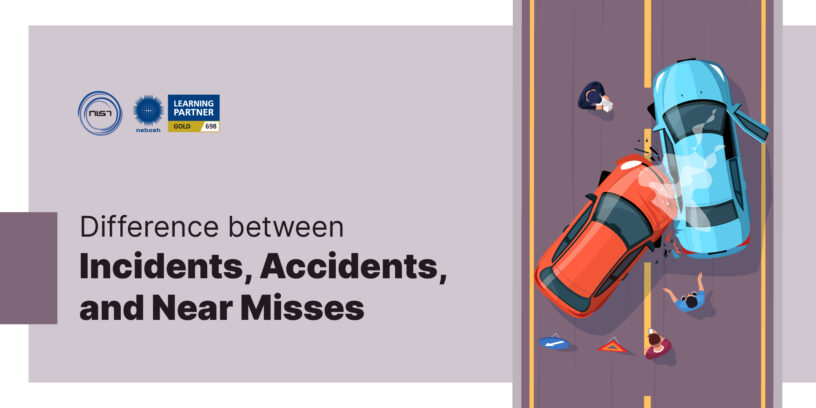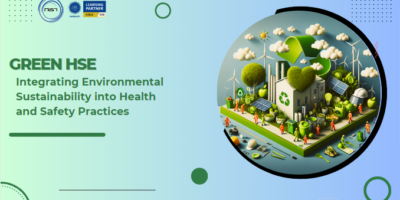Understanding every terminology is essential in the vast & complex field of safety management. Especially in sectors with high hazards like construction, manufacturing, and transportation, we frequently experience mishaps, incidents, and near misses. However, because they are commonly used interchangeably, their actual meanings are often confused and misunderstanding results. It’s important to understand that each of these terms has a unique meaning and carries a different amount of risk and consequence. The purpose of this blog article is to distinguish between accidents, incidents, and near misses.
What Is An Accident?
As per ISO 45001, an Incident where injury and ill health occurs is sometimes referred as an accident.
They frequently happen quickly and without prior notice. Car accidents, slips and falls, and industrial mishaps are a few examples of accidents. Carelessness, negligence, or a lack of information are all potential causes of accidents. When an accident occurs, it is crucial to accept responsibility for the results and take action to stop future occurrences of the same catastrophe.
Accidental examples include:
- an automobile accident caused by a distracted driver
- a ladder fall caused by a lack of safety gear
- a workplace accident brought on by incorrect equipment use
What Is An Incident?
As per ISO 45001, Incidents are referred to ‘Occurrences arising out of, or in the course of, work that could or does result in injury and ill health’.
Unsafe conditions or negligent actions might lead to incidents. Even while they might not be harmful, they might nonetheless be signals that more serious things might occur if the matter is not treated.
What Is A Near Miss?
As per ISO 45001, an Incident where no injury and ill health occurs, but has the potential to do so, may be referred to as Near miss.
An example of this may be someone stumbling over a box and almost falling but catching himself. Near misses are frequently disregarded because there was no harm done, but we must report them in order to learn from the incident and take preventative measures going forward.
Near-miss examples include:
- Stumbling over a box and stopping oneself from falling
- A car brake just in time to avoid colliding with another vehicle.
- An employee almost enters a dangerous region without the necessary protective gear.
Circumstances & Causes:
To take the required precautions to prevent accidents, it is imperative to understand the distinction between incidents, near misses, and accidents.
Human factors like neglect, carelessness, or a lack of information frequently cause accidents. For instance, a worker may misuse machinery while disobeying safety regulations, leading to an accident.
Unsafe conditions or negligent behaviour that, under certain situations, could cause harm or damage can be blamed for incidents. A typical illustration would be a worker in construction negligently leaving equipment on a high level. Even while this could result in an accident if someone goes underneath, there may not necessarily be any negative consequences.
Even though there was no immediate danger or damage, near misses are frequently less visible because the possibility existed. Near misses can occur for a number of different causes, such as luck, little errors in judgment, or procedural problems.
- Accidents demand prompt consideration, reporting, and action. Accidents have clear consequences, thus measures should be done to stop this from happening again in the future.
- Despite not resulting in immediate harm, incidents must be addressed to stop them from developing into catastrophic mishaps.
- Near misses should also be documented and examined even though they didn’t result in damage. They act as warning signs of potential dangers and offer a chance to fix problems before a catastrophic accident happens.
For successful risk assessment, management, and prevention, it is essential to comprehend these differences. Along with incidents and accidents, recognizing and reporting near misses plays a critical role in learning and preventing future harm. They provide insightful information about potential flaws and hazards enabling preventative measures and fostering a secure environment.
For safety training, consulting, auditing, E-learning course content creation & other safety services, call NIST Global – India’s one of the top safety organizations.
Call our safety experts @ +91 8754465588 / info@nistglobal.com














Leave a Reply